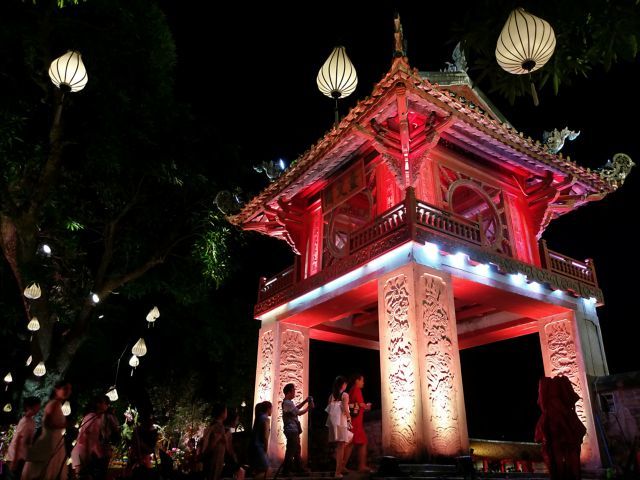 |
One of the most important relics and popular tourist destinations of Hà Nội, Văn Miếu-Quốc Tử Giám (Temple of Literature Complex) will undergo a major renovation and restoration after Prime Minister Nguyễn Xuân Phúc approved the project in April.
The project will focus on evaluating the condition of the relic, developing a preservation and restoration plan as well as developing the values of the site.
“One of our priorities is promoting and developing Văn Miếu Quốc Tử Giám via technology,” Lê Xuân Kiêu, director of Văn Miếu-Quốc Tử Giám Culture and Science Centre, which is in charge of managing and preserving the relic, told Tiền Phong (Vanguard) newspaper on Friday. “We will push the use of technology, especially virtual reality. The use of VR will give visitors a glimpse of life at the Temple of Literature in the past, an experience that we can hardly have without technology.”
Kiêu said one of the new tasks of the project was to manage the development of surrounding areas. There must be tighter limits on the maximum height of homes in the neighbourhood, Kiêu said, otherwise the relic will be surrounded by high-rise buildings.
The centre also aims to enhance tourists’ knowledge about the destination.
Travel guides are offered to tourists, but information about each structure and people associated with them – including the first principle of the university Master Chu Văn An, three kings that made significant contributions to different structures in the complex and the doctor laureates – is still inadequate, according to Kiêu.
“The nation’s culture and history is well associated with its people,” Kiêu said. “Therefore, one of our goals is to help tourists, through their visit to Văn Miếu, learn about the keen learning spirit of Vietnamese people, the values of education and the talents of the country over different periods of time.”
The Temple of Literature Complex consists of main structures including Văn Miếu (a temple dedicated to Confucius because Confucianism used to be a popular religion in Việt Nam in feudal times), Quốc Tử Giám (the first national university of Việt Nam), stelae garden (which houses carved stones recording the list of doctor laureates from feudal times) and Văn Lake (once a place for scholars to discuss literature and compose poems).
As the Văn Lake area is separated from the main structures by Quốc Tử Giám Street, it is often overlooked by visitors.
Finding ways to connect this area with the main structures is also one of the goals of the project. Proposed measures might include banning vehicles from Quốc Tử Giám Street and building a crossover bridge, or installing more traffic lights to help visitors cross the street.
In addition, phương đình (a structure functioning like a communal house) in the middle of the lake and the bridge leading to it will also be restored. This building will host traditional folk art performances and act as a place for visitors to learn about traditional culture.
Deputy director of the Cultural Heritage Research and Development Centre Nguyễn Văn Huy said the project will be the framework for relevant agencies to implement the preservation and development work in a sustainable and effective way.
The latest major preservation and renovation project was conducted in 1990s.
Văn Miếu-Quốc Tử Giám Culture and Science Centre will organise a conference receive recommendations from scientists, experts and relevant organisations, as well as members of the local community.
The Temple of Literature Complex was built in the 11th century during the Lý Dynasty. It is known as one of the country’s top destinations, rich with history and culture.
It receives about two million visitors each year. — VNS
 Van Mieu-Quoc Tu Giam will undergo a major renovation and restoration. Built in the 11th century, it now becomes one of the country’s top destinations, rich with history and culture.
Van Mieu-Quoc Tu Giam will undergo a major renovation and restoration. Built in the 11th century, it now becomes one of the country’s top destinations, rich with history and culture.